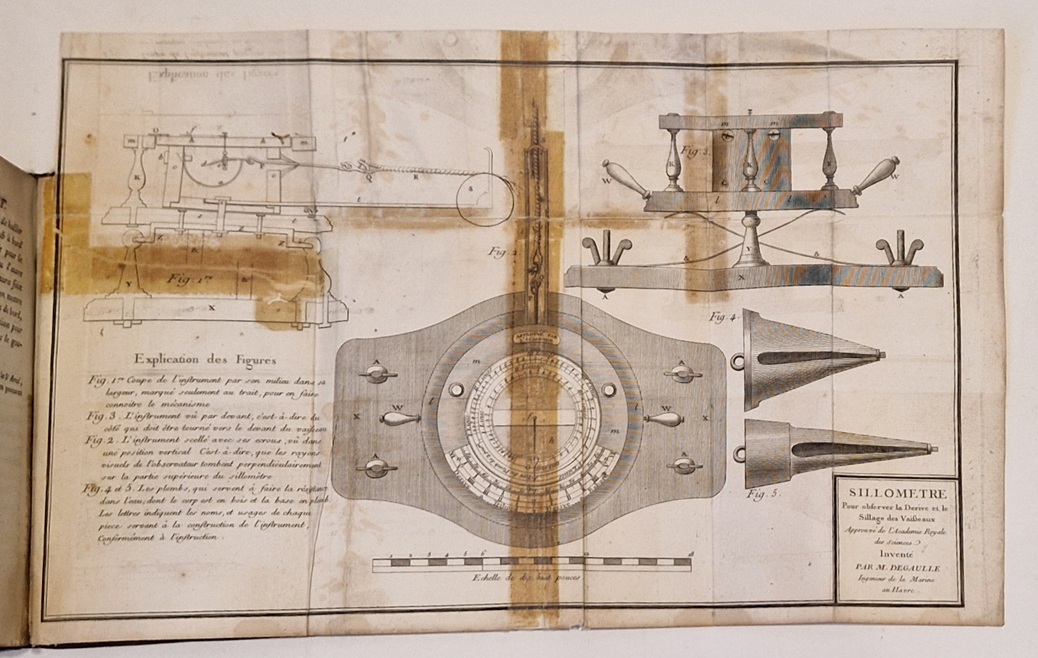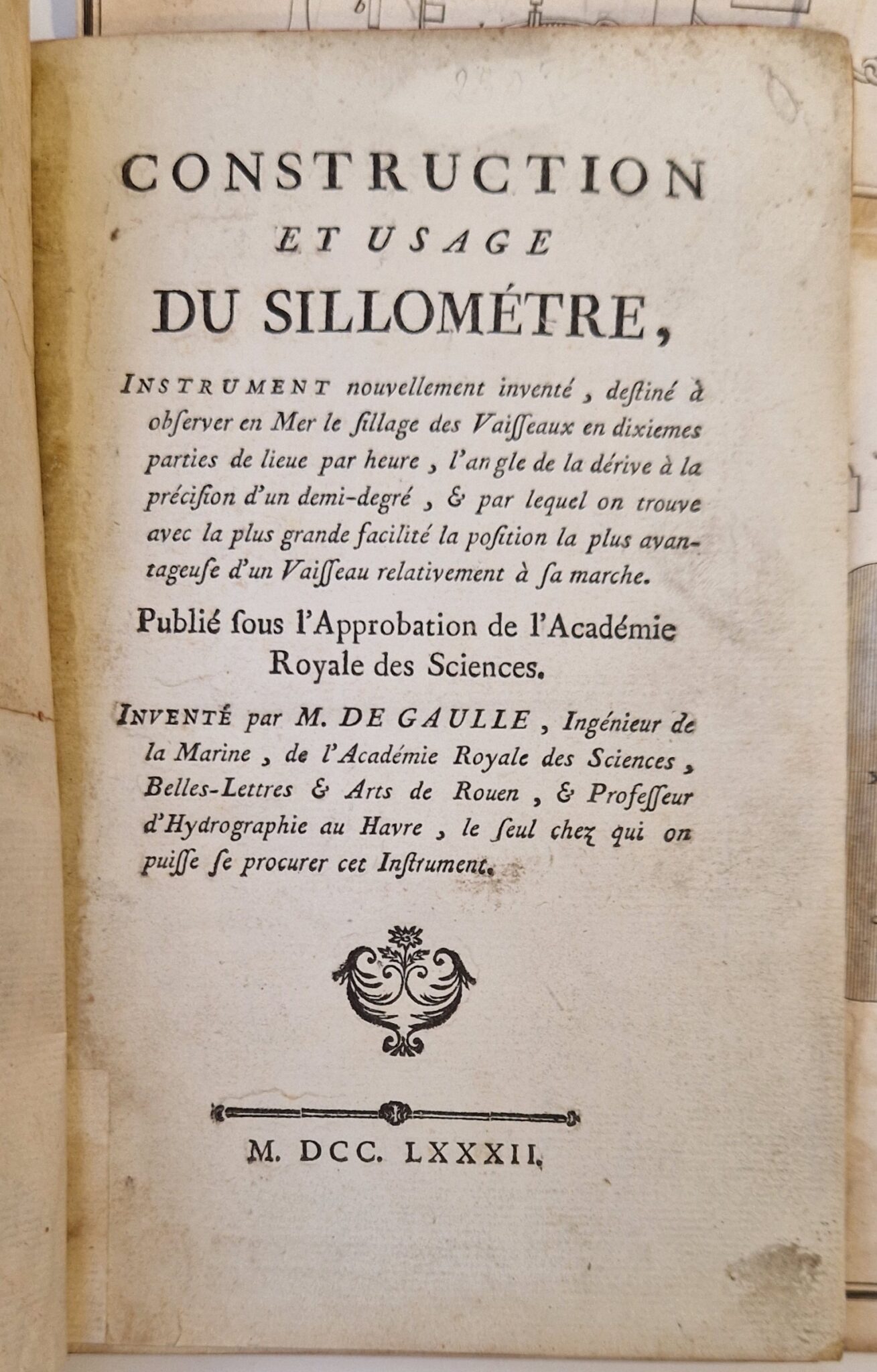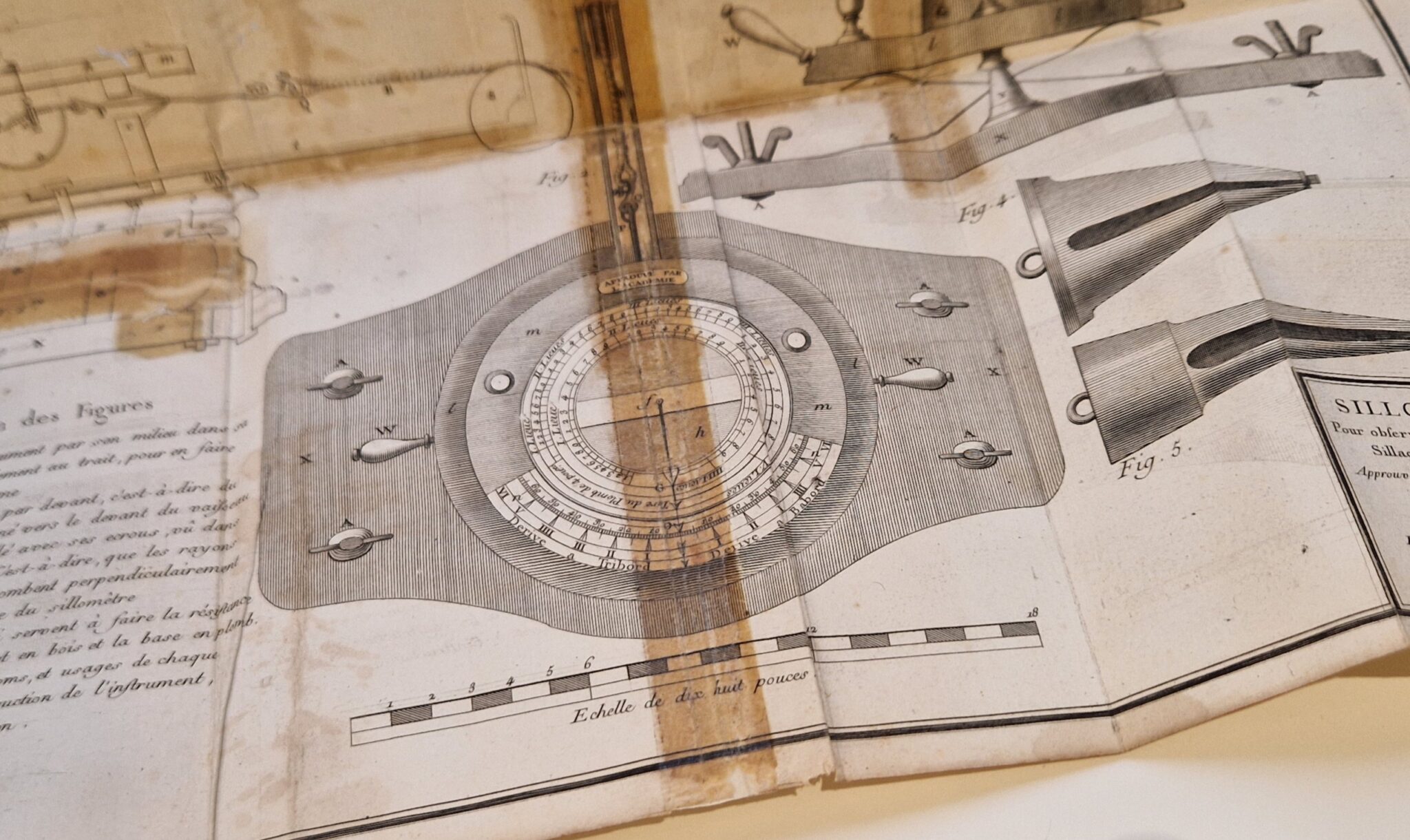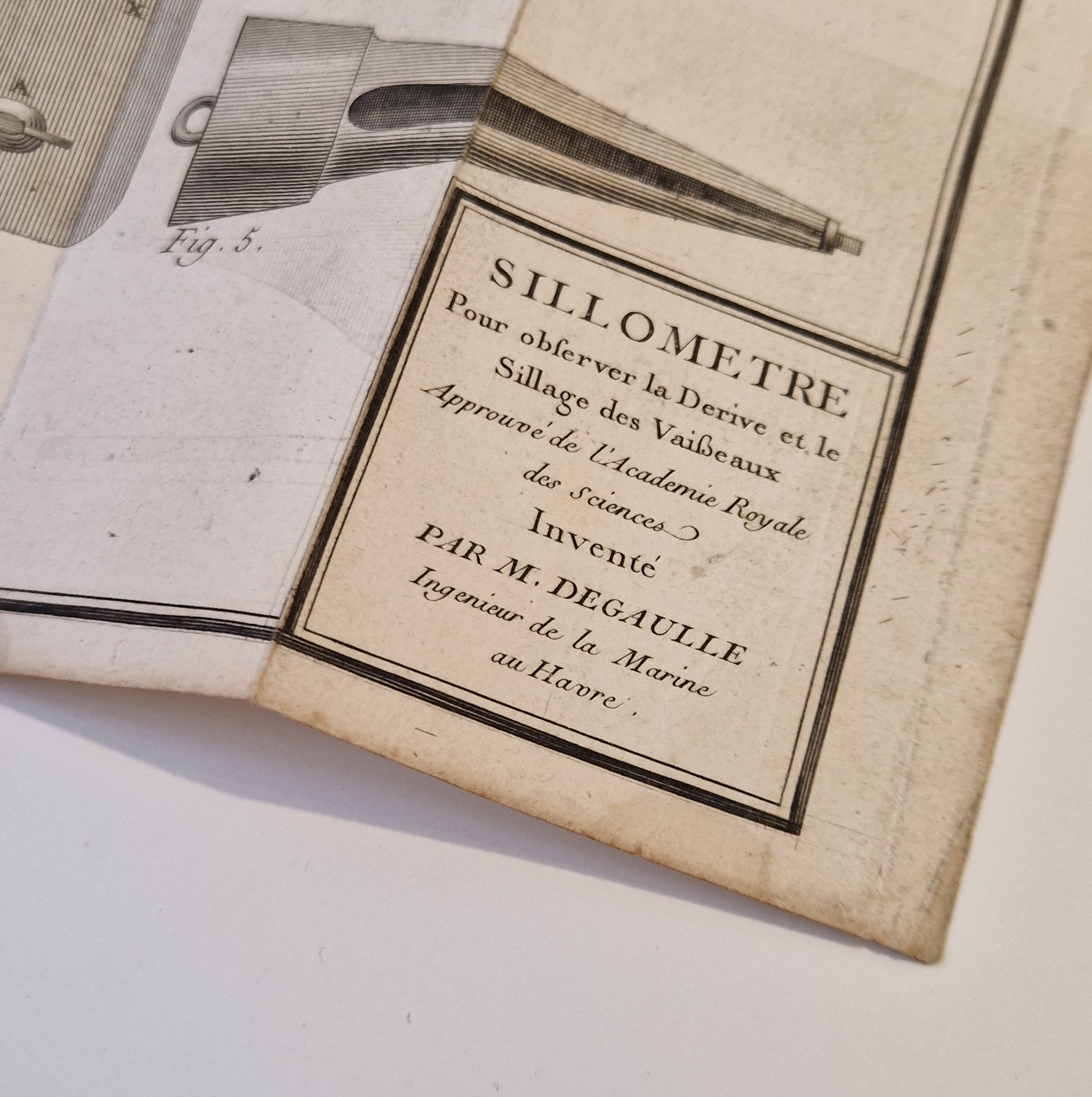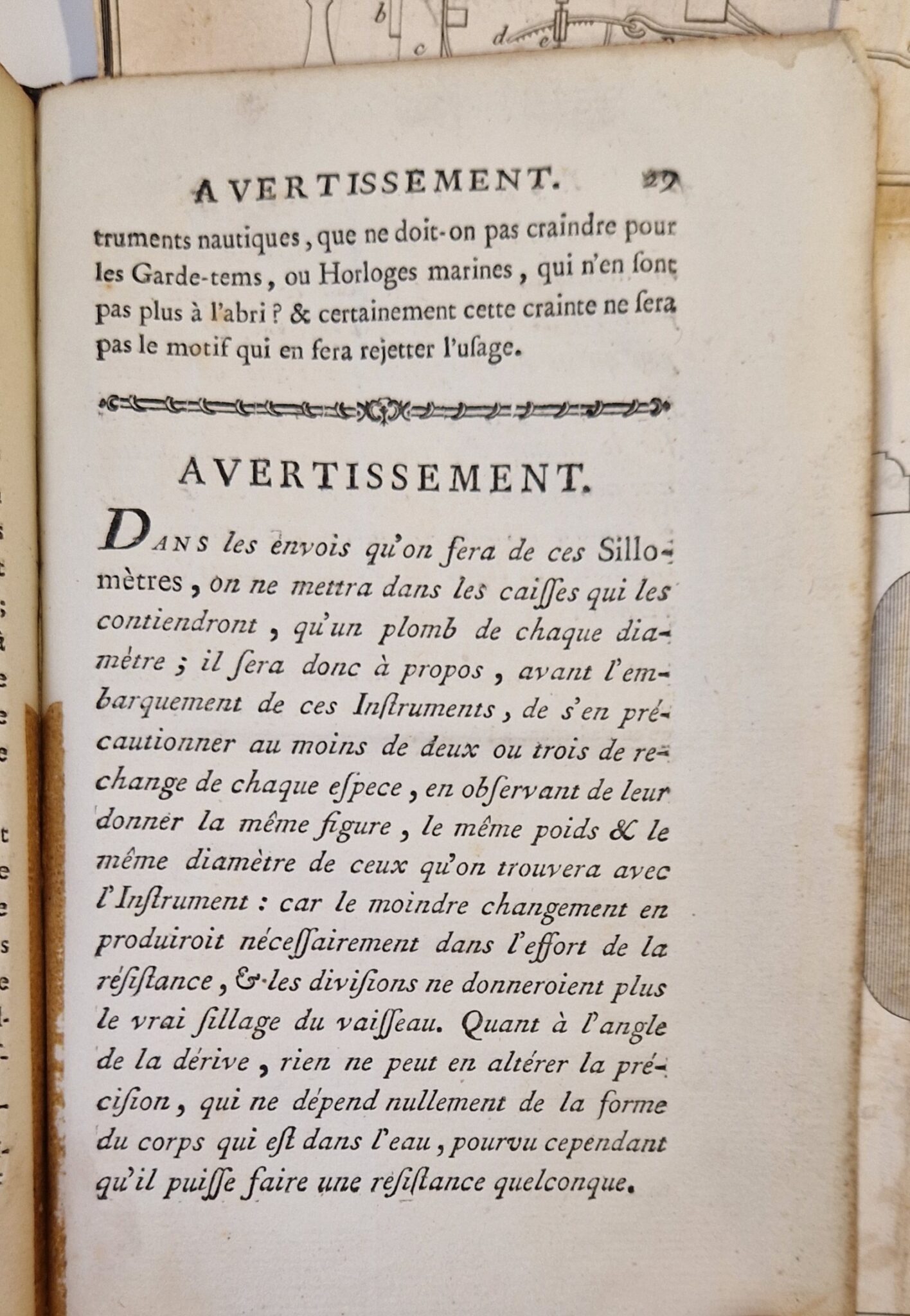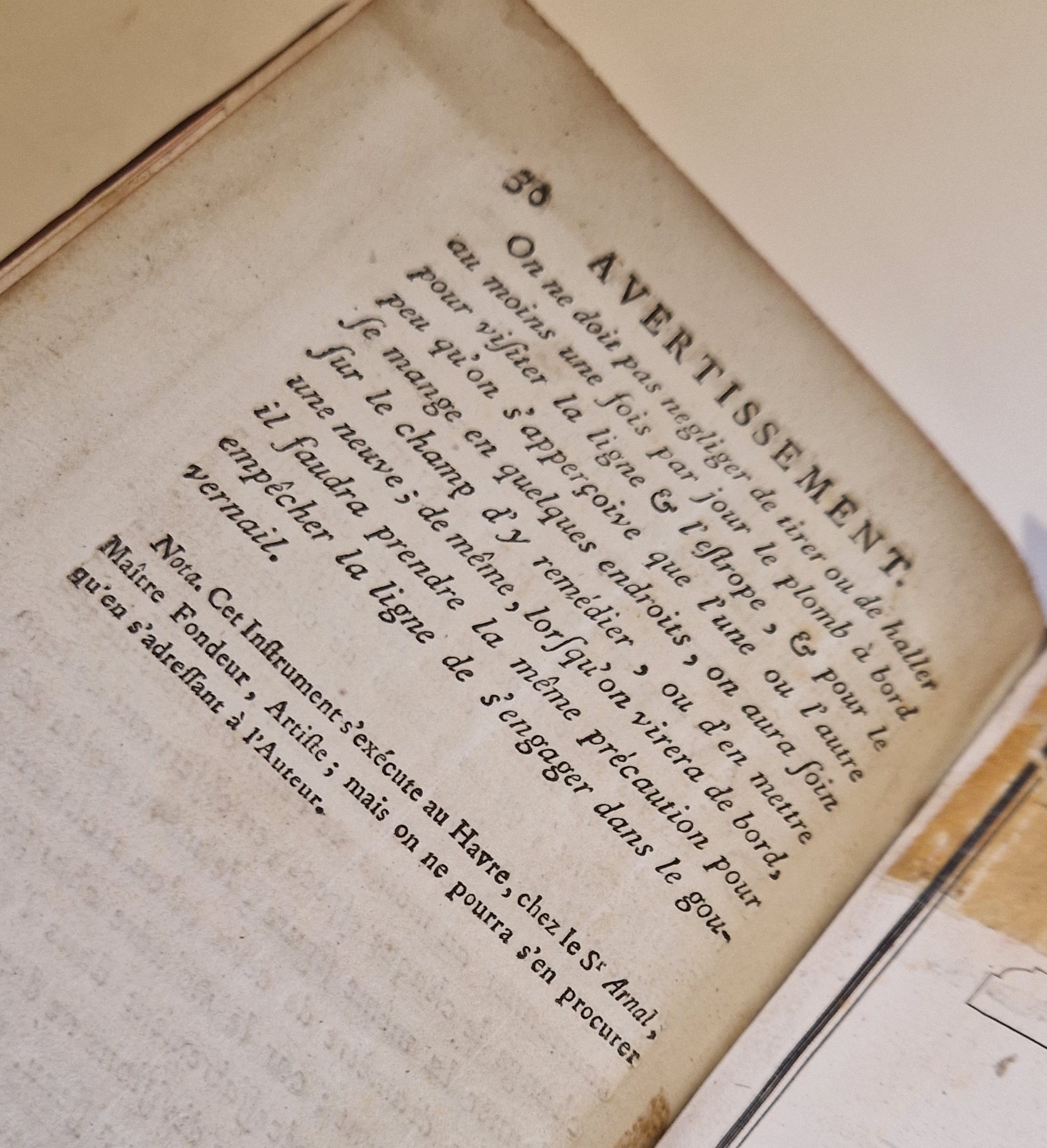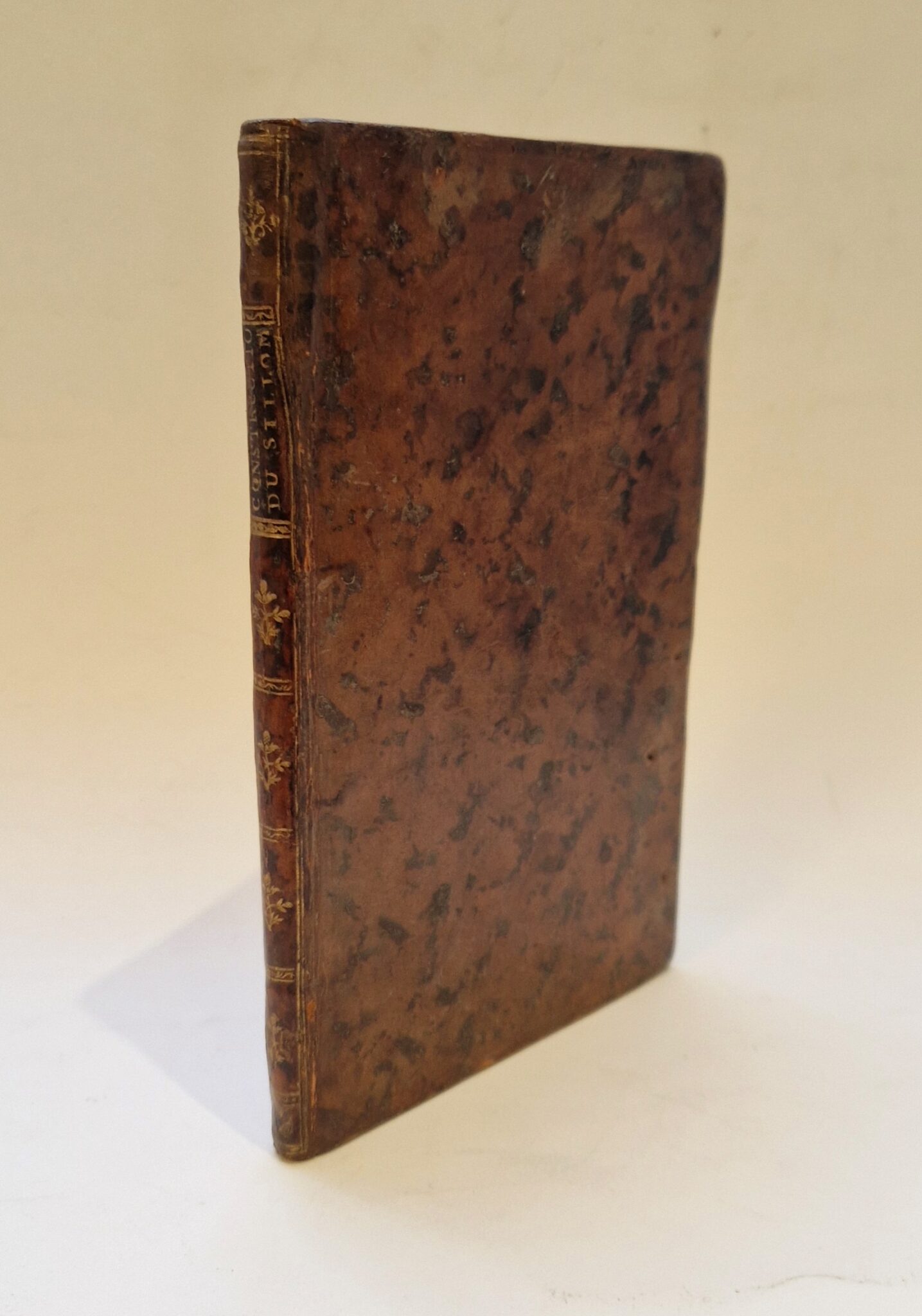Description
GAULLE (Jean Baptiste DE), Construction et usage du sillomètre, instrument nouvellement inventé destiné à observer en mer le sillage des vaisseaux en dixièmes parties de lieues par heure, n. p. [Le Havre, at the author’s expense], 1782.
8°, 30 pages and one large folding plate ; contemporary marbled calf, flat gilt spine. Spine and joints restored ; one small hole and tear repaired in title ; plate stained and roughly repaired along folds.
First edition of the illustrated description of the first mechanical speed indicator that actually underwent commercialisation.
According with worldcat, only two copies in USA, both only in New York : NY Public Library and Columbia University.
“The author honestly points out that the name ‘sillomètre’ was first given by the Chevalier de Fleurieu, a ship’s captain and director of ports and arsenals for the kingdom. This name was well chosen, since the device was used to measure the ‘wake’ or ‘seillage,’ which at the time meant the speed of the ship.
This instantaneous speed indicator actually is a dynamometer. The two truncated cones, shown on the right of the plate, were either towed or submerged by the ship and provided calibrated resistance. The device pivoted on its axis, also indicating the degrees of drift, which was useful information for plotting the estimated position. There is a mention at the end of the booklet : ‘Cet instrument s’exécute au Havre, chez le sieur Arnal, maître fondeur-artiste, mais on ne pourra s’en procurer qu’en s’adressant à l’auteur (This instrument is manufactured in Le Havre by Mr Arnal, master founder and artist, but can only be obtained by contacting the author).’
Unlike many devices that only existed as blueprints, the ‘sillomètre’ designed by engineer De Gaulle was actually manufactured, probably in small batches, but a few models can still be found today.” (translated from Jean Randier, L’Instrument de marine, pp. 46-47).
After modest beginnings in the merchant navy, Jean-Baptiste De Gaulle (1732-1810) opened a free hydrography school in Le Havre and published various nautical charts and papers on navigation. He invented several navigational instruments, such as the ‘compas azimutal’ and the ‘sillometer’, which earned him the title of marine engineer and geographer. In 1788, he studied the currents of the Seine estuary and drew up a navigation and anchorage chart. In 1789, stripped of his rank of engineer and his pension, he became a professor of hydrography at Le Havre naval school. In 1791, he was called to Honfleur as a professor of navigation. He gave public lessons there until his death in 1810.
Frère, Bibliographe normand, I, 12 ; Crone Library n° 639 ; Polak 2369.
Ask the Dealer
Dealer information
 Le Zograscope
Le Zograscope
Established by Alexandre Piffault in 2014 and based in Paris at 5 rue de Condé, 75006, very close to Odéon, Le Zograscope specializes in antique and rare books in Science, Medicine and Technology, and rare antique instruments in the same fields. We have especially a strong interest in early and continental microscopy, early and special mathematical/drawing instruments, medical and surgical instrument, and rare technology.
Personnal website : https://www.lezograscope.com/



